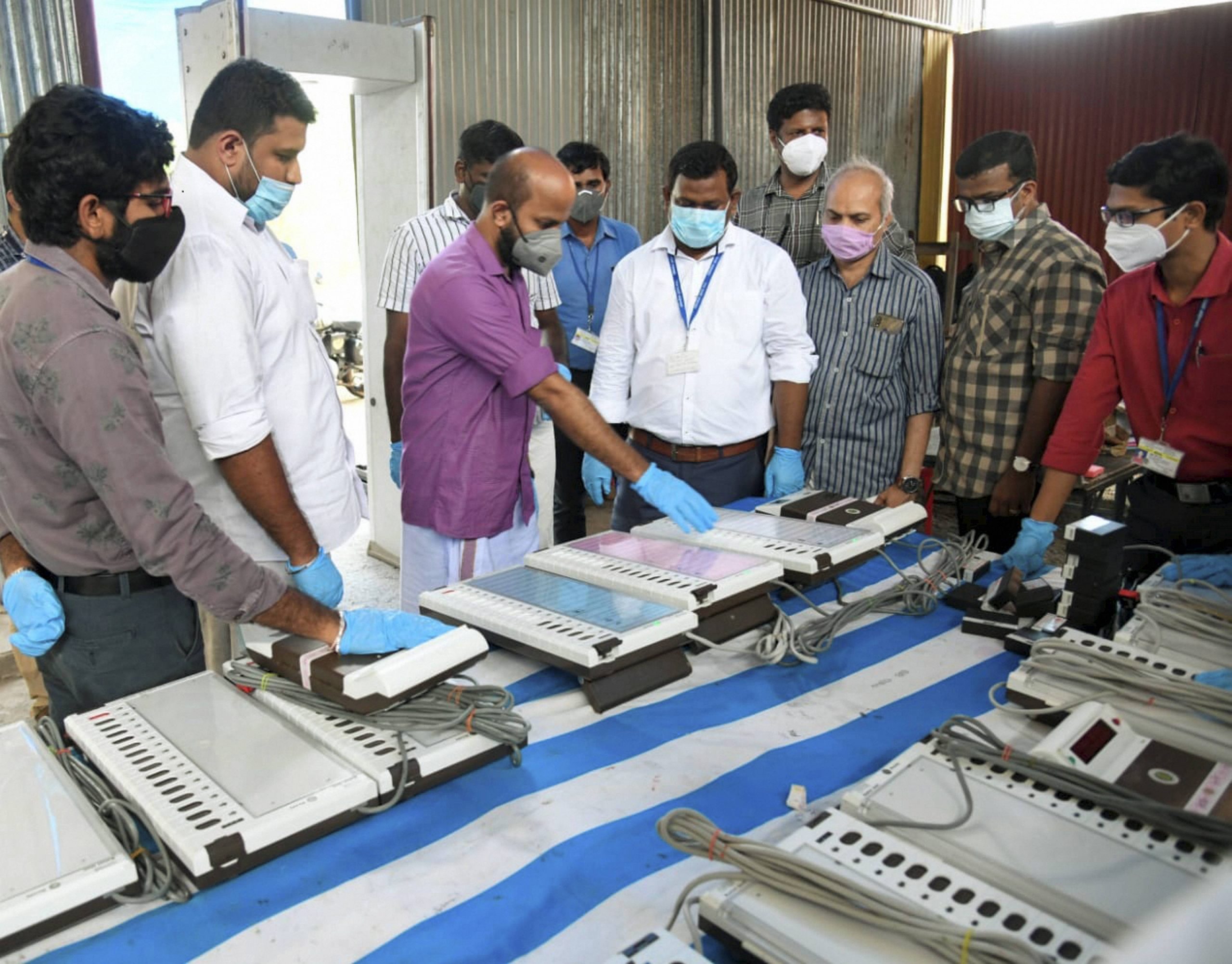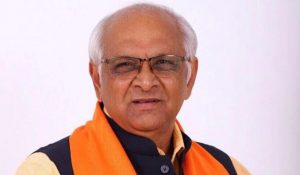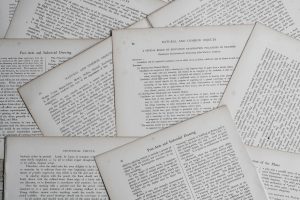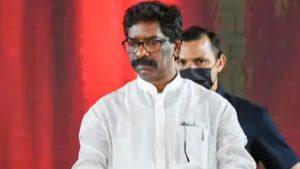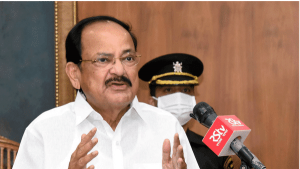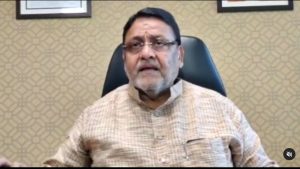The elections for four state assemblies of West Bengal, Tamil Nadu, Kerala, Assam and Union Territory of Puducherry will be held from March 27 to April 29 and the results will be announced on May 2, the Election Commission announced on Friday. With this the model code of conduct comes into immediate effect.
The Mamata Banerjee-ruled West Bengal has the maximum number of phases and will vote in eight rounds from March 27 to April 29. Assam votes in three phases from March 27 to April 6 and Kerala, Tamil Nadu and Puducherry will vote on April 6.
Starting the press conference with a tribute to EC staff who braved the pandemic to conduct elections, Chief Election Commissioner of India Sunil Arora said, “A total of 824 assembly constituencies shall be going for polls during these elections. 18.68 crore electors will cast vote at 2.7 lakh polling stations in Tamil Nadu, West Bengal, Kerala, Assam and Puducherry.”

Arora added that roadshows and door-to-door campaign will be allowed provided all pandemic precautions are taken by candidates and parties.
The polls to a total of 824 constituencies are being seen as an indicator of the mood of the electorate in the backdrop of sluggish economy, reeling under the impact of the year-long COVID-19 pandemic, and the farmers’ unrest over new farm bills.
WEST BENGAL
The elections in West Bengal, the third largest state in terms of Lok Sabha seats (42), will be held in eight phases. First phase will be held on March 27 (30 seats), second on April 1 (30 seats), third on April 6 (31 seats), fourth on April 10 (44 seats) fifth on April 17 (45 seats), sixth phase on April 22 (43 seats), seventh phase on April 26 (36 seats) and the last phase on April 29 ( 25 seats). The results will be announced on May 2.
The Bharatiya Janata Party (BJP) and Mamata Banerjee-led Trinamool Congress are engaged in a fierce battle for the 294-member Assembly. The 66-year-old Chief Minister is seeking a third straight term but the going has been anything but easy this time around. A steady stream of exits from the party, including that of veterans such as Suvendu Adhikari and Dinesh Trivedi, have ony added to her problems.
But the bigger problem, analysts feel, is her inability to stitch up a ‘secular’ alliance. The decision of the Left and the Congress to contest together may not mean much in terms of impact but will definitely divide the anti-BJP vote.
https://public.flourish.studio/visualisation/5529264/
Further queering the pitch in the state that has around 30% Muslim population , could be Asaduddin Owaisi’s AIMIM. Just recently he spoiled the RJD’s game in Bihar’s Seemanchal.
The BJP, which has three MLAs in the outgoing Assembly, has pulled out all stops to try and win the biggest state in the east. It’s efforts have been paying off with the party taking its Lok Sabha tally from two in 2014 to 18 in the 2019 Lok Sabha elections. Mamata is relying on her giant- killer image — acquired in 2011 after she trounced the Left that had ruled the state for 34 years – and her ‘Bengal ki beti’ pitch, along with ‘good governance’ claim.
TAMIL NADU
Tamil Nadu will vote in single phases on April 6 to elect members to the 234-strong Assembly. The votes will be counted on May 2. The term of Assembly ends on May 24. The fight here is primarily between the DMK-led alliance that includes the Congress, MDMK, Left and other smaller parties. On the other side is Chief Minister Edappadi K. Palaniswami-led AIADMK, which is in alliance with the BJP. The release from jail of Sasikala, the one time close aide of former chief minister J Jayalalithaa, has added a new angle to the election scenario in the state. Whether Sasikala will fight on her own or will throw in her lot with the AIADMK remains to be seen.
With Jayalalithaa and Karunanidhi gone, this is the first Assembly election with no star power at all. Karunanidhi’s son and DMK chief Stalin has a lot at stake as this could be his best chance at power in the state. The elections will also witness a new sonrise with Stalin’s son and party youth secretary Udhayanidhi Stalin seeking a ticket to contest from Chepauk-Triplicane — DMK’s dependable constituency.
The much-awaited and talked about entry of superstar Rajinikanth’s party fizzled out within days of launch with the actor bowing out citing health concerns.
KERALA
The elections for the 140-member Kerala Assembly will be held in single phase on April 6 and the results are expected to be announced on May 2.
All eyes are on the state to see if voters will stick to the cyclic trend of not voting back a party to power. Going by the Left’s performance in the recently-held local polls, the LDF coalition seemed to be going strong till recently. But reports suggest that the Congress-led UDF is quickly catching up and it could be anybody’s game.
The Bharatiya Janata Party has been focusing a lot on the southernmost state and are conducting an aggressive campaign to make inroads The entry on Metroman E Sreedharan and former DGP Jacob Thomas has added to the buzz around the party.
For the Congress, a win in this state is crucial to have a presence in south India. It is also important for the party to put up a good show in the state that elected it’s former president Rahul Gandhi to the Lok Sabha when BJP swept the 2019 polls.
For the Left, a defeat here would mean that the party would be without any government in the country — having already lost Tripura and West Bengal.
ASSAM
The elections for the 126-member Assam Assembly will be held in three phases on March 27, April 1, April 6. The votes will be counted on May 2.
Assam, once a stronghold of the Congress, is a key north-eastern state for the Bharatiya Janata Party (BJP). It is crucial to BJP’s ‘look east’ plan. Ruled by the Congress’s Tarun Gogoi for three straight terms, the state went to the BJP in 2016 assembly elections.
All eyes are on the former Congressman-turned-BJP leader Hemanta Biswa Sarma, who was instrumental in swinging the polls in favour of the BJP in 2016. The BJP emerged as the single largest party in 2016 with 60 seats and formed the government in coalition with Asom Gana Parishad and Bodoland People’s Front.
https://public.flourish.studio/visualisation/5530079/
This time too, he is at the centre of the BJP campaign and many believe will be a strong contender for the CM post if BJP returns to power. How and where current CM Sarbananda Sonowal will be accommodated in such a scenario remains to be seen.
Assam is one of the two states, the other being West Bengal, where illegal Bangladeshi immigrants is a big issue. The citizens register exercise, NRC, was started by the Centre from here but on realizing that many on the list were Hindus, the list was put in cold storage. The NRC buzz is hardly heard in BJP campaign meetings this time, but the Congress doesn’t forget to remind them of the fiasco.
The Congress for the first time has aligned with Maulana Badruddin Ajmal’s All India United Democratic Front, the party it had spurned for long. This has opened them to attacks from the BJP.
PUDUCHERRY
The election to the 33-member Assembly of the union territory of Puducherry will be held in a single phase on April 6 . The Union Territory is going to polls in the interesting backdrop of the dramatic downfall of the Congress’s N Narayanasamy government. He lost the trust vote in the assembly after three MLAs of the ruling Congress-DMK coalition resigned.
In a tactical move, the Centre replaced Kiran Bedi with a Tamilian, Tamilisai Soundararajan, to evade any future attacks over Centre letting an ‘outsider’ rule the state in the absence of a chief minister.
All eyes will be on the Vanniyar community that constitute about 60% of the electorate. Though a traditional Congress vote bank, Vanniyars are said to not be very pleased with the party picking Narayanasamy, a Nadar, as the chief minister. Nadars comprise just around 4 % of the electorate.
The battle is between the Congress-DMK alliance and the BJP-AIADMK combination. The BJP is upbeat after Congress’s A Namasivayam, number 2 in Narayanasamy government, joined them.

